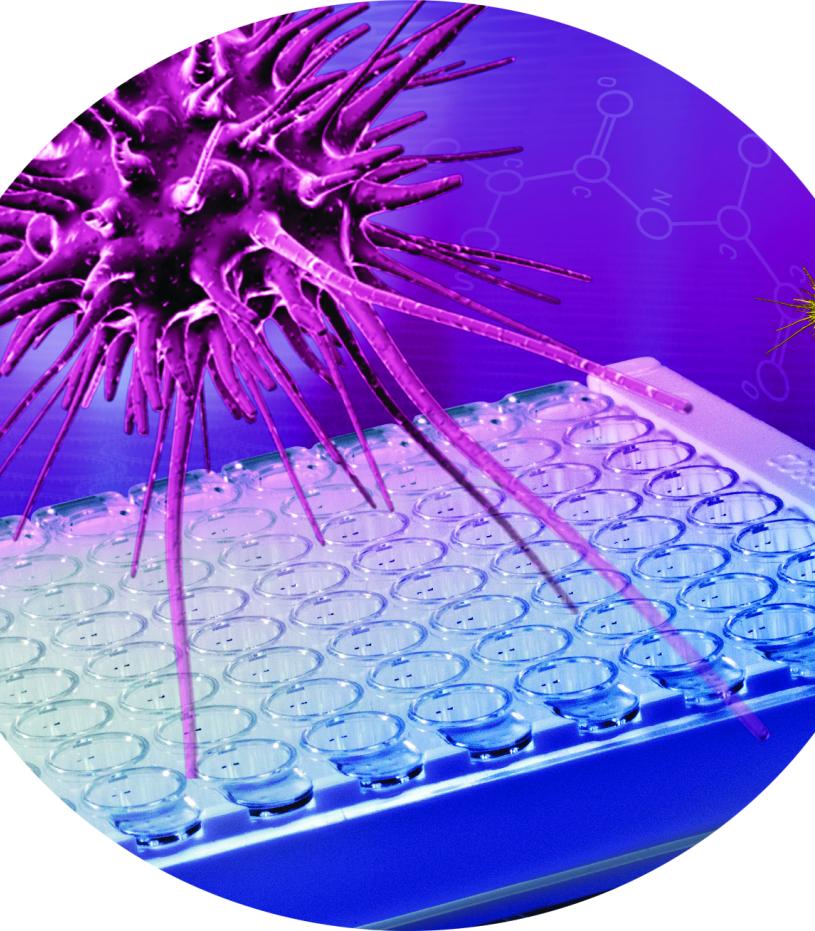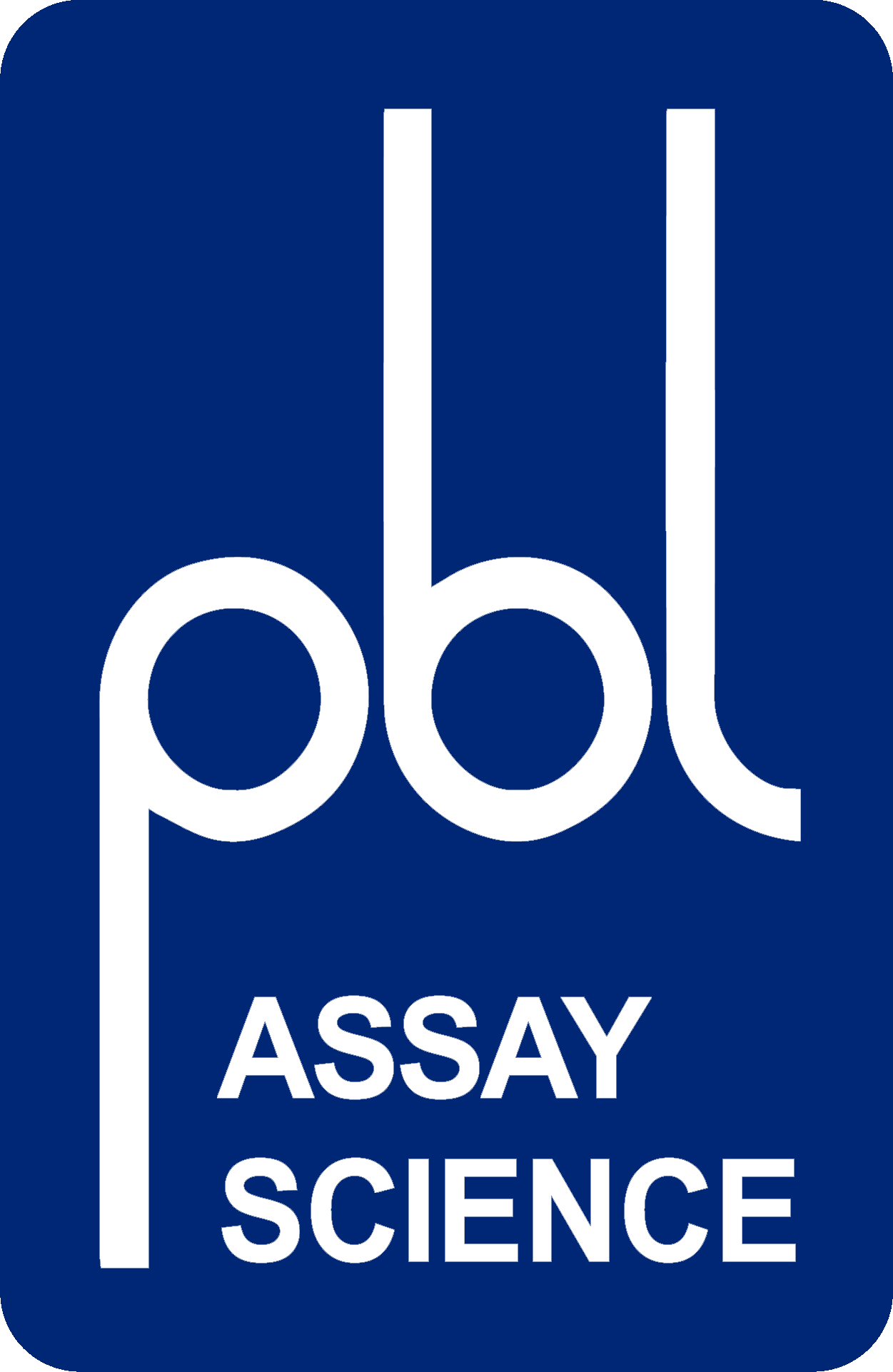Background:
The antiviral-based Cytopathic effect (CPE) assay is amongst the most sensitive assays for interferon bioactivity, with often >100 fold more sensitivity than alternatives. Many combinations of cells and viruses can be used to measure interferon activity via CPE assay. Many researchers use the human lung carcinoma cell line A549 due to their ease of growth and relatively high sensitivity to all forms of human interferons. The following is a summary of an A549/EMCV Cytopathic Effect Inhibition assay for Recombinant Human Interferon Alpha:
-
A flask of A549 cells (ATCC CCL-185) is treated with trypsin/EDTA until the cells detach
-
The cells are then diluted in media and plated in 96-well plates
-
Serial two-fold dilutions of IFN samples and standards are prepared in a separate 96-well plate and an equal volume of the dilutions are added to the cells. One row has 6 wells reserved for the cell control (no IFN, no virus) and the virus control (no IFN, virus added).
-
The plate are then incubated 18-24 hours at 37°C/5% CO2
-
A dilution of EMCV which has been determined to kill 100% of the cells within 40 hours is added to the plates, with the exception of the cell control wells which receive media
-
After killing is complete, in approximately 40 to 56 hours, the media is removed from the wells and the live cells are fixed and stained with crystal violet solution. The plates are thoroughly and gently washed with cold tap water until the unbound stain is removed. The plates are then allowed to dry overnight.
-
The endpoint is determined by microscopic examination to be well where 50% of the cells remain in comparison to the cell control (100% survival) and the virus control (0% survival)
Since bioassays are inherently complex assays which vary due to the metabolic state of the cells, the ability of the IFN to protect the cells, and the virus replication, there will be a great variability in these assays than mass based assays such as ELISAs. For example, during the calibration of the international standard for interferon-beta which was a multi-site, multi-assay study, the geometric CVs obtained were on the order of 60-80%. Generally in these assays, results from run to run and operator to operator can vary by about 1/2 log from the actual value. Thus, in order to obtain solid numbers, multiple runs are required. With experience and careful control, the CV values can be reduced.
PBL has been offering expert bioassay services for more than 10 years. Our services include assays for IFNs of different species. For researchers who would like to determine levels of IFN neutralizing antibodies in their research sample, PBL also offers neutralization assay services to measure a sample or antibody’s ability to neutralize the cytopathic effect inhibition activity of IFN as well.
Background:
The antiviral-based Cytopathic effect (CPE) assay is amongst the most sensitive assays for interferon bioactivity, with often >100 fold more sensitivity than alternatives. Many combinations of cells and viruses can be used to measure interferon activity via CPE assay. Many researchers use the human lung carcinoma cell line A549 due to their ease of growth and relatively high sensitivity to all forms of human interferons. The following is a summary of an A549/EMCV Cytopathic Effect Inhibition assay for Recombinant Human Interferon Alpha:
-
A flask of A549 cells (ATCC CCL-185) is treated with trypsin/EDTA until the cells detach
-
The cells are then diluted in media and plated in 96-well plates
-
Serial two-fold dilutions of IFN samples and standards are prepared in a separate 96-well plate and an equal volume of the dilutions are added to the cells. One row has 6 wells reserved for the cell control (no IFN, no virus) and the virus control (no IFN, virus added).
-
The plate are then incubated 18-24 hours at 37°C/5% CO2
-
A dilution of EMCV which has been determined to kill 100% of the cells within 40 hours is added to the plates, with the exception of the cell control wells which receive media
-
After killing is complete, in approximately 40 to 56 hours, the media is removed from the wells and the live cells are fixed and stained with crystal violet solution. The plates are thoroughly and gently washed with cold tap water until the unbound stain is removed. The plates are then allowed to dry overnight.
-
The endpoint is determined by microscopic examination to be well where 50% of the cells remain in comparison to the cell control (100% survival) and the virus control (0% survival)
Since bioassays are inherently complex assays which vary due to the metabolic state of the cells, the ability of the IFN to protect the cells, and the virus replication, there will be a great variability in these assays than mass based assays such as ELISAs. For example, during the calibration of the international standard for interferon-beta which was a multi-site, multi-assay study, the geometric CVs obtained were on the order of 60-80%. Generally in these assays, results from run to run and operator to operator can vary by about 1/2 log from the actual value. Thus, in order to obtain solid numbers, multiple runs are required. With experience and careful control, the CV values can be reduced.
PBL has been offering expert bioassay services for more than 10 years. Our services include assays for IFNs of different species. For researchers who would like to determine levels of IFN neutralizing antibodies in their research sample, PBL also offers neutralization assay services to measure a sample or antibody’s ability to neutralize the cytopathic effect inhibition activity of IFN as well.

